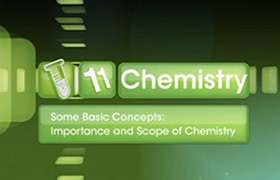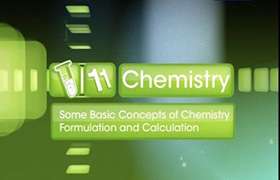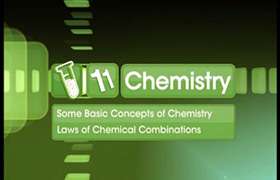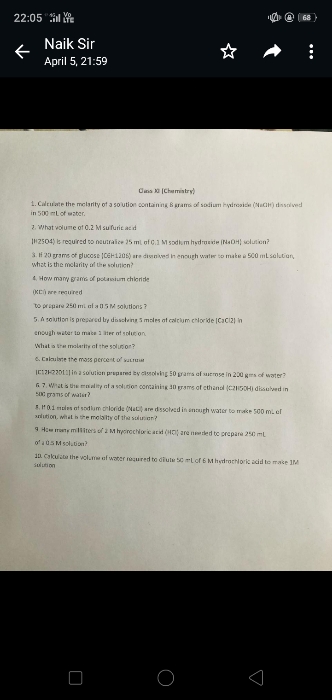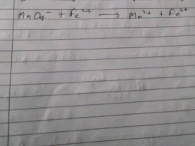CBSE Class 11-science Answered
1 mole of KClO3 is thermally decomposed and excess of aluminium is burnt in the gaseous product . how many moles of Al2O3 are formed?? sir i did not understand the meaning of the question. please explain what the question is looking for and the steps of the answer. thank you.
Asked by Sayoni Maiti | 29 May, 2014, 09:20: AM
The thermal decomposition of KClO? and the subsequent oxidation of Aluminum to form Al?O?.
Two reactions are:
2 KClO? → 2 KCl + 3 O? and 4 Al + 3 O? → 2 Al?O?
The molar ratio for the first reaction is 2:3 for KClO?: O?. Thus, if 1 mole KClO? is decomposed, 1.5 moles of O? is produced ===> 1 mol KClO? x ( 3 mol O? / 2 mol KClO?) = 1.5 mol O?
The molar ratio for the second reaction is: 3:2 for O? : Al?O?. ===> 3 moles of oxygen produces 2 moles of aluminum oxide.
Since we have 1.5 moles of oxygen (half of the three needed) we can expect to produce half of the 2 moles or 1 mole aluminum oxide. Hence,
1.5 mol O? x ( 2 mol Al?O? / 3 mol O?) = 1 mol Al?O?
Answered by Prachi Sawant | 29 May, 2014, 11:07: AM
Concept Videos
CBSE 11-science - Chemistry
Asked by hm6561889 | 15 Apr, 2024, 07:45: AM
CBSE 11-science - Chemistry
Asked by manikandanragul1 | 11 Apr, 2024, 09:02: AM
CBSE 11-science - Chemistry
Asked by jayag1298 | 08 Apr, 2024, 03:14: PM
CBSE 11-science - Chemistry
Asked by omniscientnjf2021 | 07 Apr, 2024, 10:18: PM
CBSE 11-science - Chemistry
Asked by ansh.skulkarni1158 | 07 Apr, 2024, 11:03: AM
CBSE 11-science - Chemistry
Asked by nikhithaguguloth14 | 29 Mar, 2024, 08:15: PM
CBSE 11-science - Chemistry
Asked by sumedhasingh238 | 27 Mar, 2024, 11:04: PM
CBSE 11-science - Chemistry
Asked by avijotsingh946431 | 22 Feb, 2024, 05:36: PM
CBSE 11-science - Chemistry
Asked by gurmelsinghray | 21 Feb, 2024, 08:43: AM
CBSE 11-science - Chemistry
Asked by VarunTYAGi9013 | 21 Oct, 2023, 07:14: PM


